Regular NYE contributors TIM HICKS and CHRIS CLARK investigate two of the UK’s great murder mysteries. The June 1990 disappearance of Mrs Trevaline Evans and the brutal murder of Mrs Ann Heron in August 1990, which is Durham Constabulary’s only unsolved murder.
Their analysis has given rise to some startling developments and new lines of enquiry, never published before. Regrettably, because of the amount of material related to these two crimes, the article has had to be published in two parts.
Part 2 of this article will be published shortly.
Trevaline Evans & Ann Heron: Was it Halliwell? (Pt 1)
by CHRIS CLARK & TIM HICKS
~~~~~
Introduction: New witness evidence traced by the Daily Mirror
Many readers will be aware that the NYE has been investigating serial killer Christopher Halliwell, who was convicted of the murders of Miss Becky Godden-Edwards aged 20 in 2003 and Miss Sian O’Callaghan aged 22 in 2011, at Swindon, Wiltshire.
In August 2018, the NYE published this article Is Halliwell the East Lancs Ripper? in which the authors asserted that Halliwell should be considered as a suspect in a number of unsolved murders in the North West of England.
One of these murders was the murder of Miss Julie Finley, which Chris raised with both Merseyside Police and the Avon & Somerset Constabulary/Wiltshire Police joint Major Investigation Team in September 2014; some seven years ago.
In March 2020, our colleagues on the Daily Mirror traced a key witness who came forward with important new evidence linking Halliwell to her murder. As a result, Merseyside Police started a review of Miss Finley’s murder, with Halliwell as a suspect.
In our article Halliwell: Fulcher and NYE vindicated the authors assessed the impact of fresh witness evidence identified by our colleagues on the Mirror.
According to these Mirror articles here and here, the new witness evidence is that:
- Halliwell lived at Aughton Park, Ormskirk in 1994, four miles from the deposition site where Miss Finley’s body was dumped.
- He worked as a window fitter or roofer in North Wales before returning to Swindon on weekends to work as a taxi driver.
- Halliwell was driving a D registration white van at the time. A woman seen fitting Miss Finley’s description was seen being forced into a white van at the deposition site.
This evidence has been verified by a second witness.
Merseyside Police has a particularly proactive and helpful media unit that works well with new media. It provided the NYE with the following media statement, which contains an appeal for information:
STARTS
Detective Chief Inspector Rachel Wilson said:
We can confirm we are investigating a new line of enquiry in relation to the murder of 23-year-old Julie Finley in August 1994.
A new witness has recently come forward with information and has been spoken to by detectives.
Julie’s body was found in a carrot field off the St Helens bound carriageway of the Rainford by-pass by a cyclist at lunchtime on Saturday, 6 August 1994. She had been strangled and there was no sign of her clothing at the scene. There was also no indication that where she was found was the scene of the murder.
We continue to appeal for any information which can help her mum, Pat, and the rest of her family find some closure after all these years and would ask anyone with information to contact Merseyside Police via our social media desk @MerPolCC, call 101, or CrimestoppersUK, anonymously, on 0800 555 111.”
ENDS
In November 2020, Merseyside Police searched land near the Rainford by-pass and released the following statement to the NYE:
POLICE PRESENCE – INTAKE LANE, BICKERSTAFFE
We can confirm Merseyside Police officers have today, Thursday 26th November, finished a search of land near Intake Lane on the border of Bickerstaffe and Rainford.
Officers were responding to reports suggesting a body had been historically buried on the land.
An extensive search of the area has been carried out over the past seven days but nothing has been located.
The search was not linked to any historical Merseyside Police investigations.
Which would seem to indicate it was not connected to the murder of Miss Finley. The authors will continue to monitor the case.
Background: Chris investigates
Chris is a retired Intelligence Officer from Norfolk Police who now specialises in the investigation of cold cases.
Chris had previously looked at the disappearance of Mrs Trevaline Evans in North Wales in June 1990 and assessed it as having all the classic indicators of an attack by Christopher Halliwell in a rural area of outstanding beauty with access to fishing and canal boats, which would be attractive to Halliwell. The crime probably involves abduction by persuasion, which was Halliwell’s forte.
Chris had also investigated the murder of Mrs Ann Heron in 1990, which again has very strong Halliwell indicators.
Following on from the new evidence discovered by the Mirror, the authors started a fresh investigation into both crimes. Their investigation has:
- Led to an evidential link between both crimes, revealed in Part 2 for the first time by the NYE, on an exclusive basis.
- Identified new lines of enquiry for the murder of Mrs Evans.
- Identified new lines of enquiry for the murder of Mrs Heron.
- Eliminated a man who has been held out in the media as a suspect in the murder of Mrs Heron.
The North Wales connection.
The witness information developed by the Mirror has revealed that Halliwell was working in North Wales. This raised a concern with the authors that he may have committed murders in the North Wales Police Force Area. In their article Halliwell: Fulcher and NYE vindicated published in March 2020 the authors wrote:
“Halliwell worked as a builder, groundsman and gravedigger. He successfully concealed the body of Becky Godden Edwards for several years by burying her. Ormskirk is only an hour’s drive from North Wales. This aspect of his modus operandi means that here could be cases of women that have gone missing in North Wales or Merseyside, who may have been murdered by Halliwell and buried in either force area. As with Miss Becky Godden-Edwards, they may not even have been notified to the police as missing.”
Tim contacted North Wales Police raising the possibility that Halliwell may be responsible for crimes in the North Wales force area. In response to this media enquiry from the NYE,
North Wales Police commented:
“Detective Superintendent Steven Williams confirms that there are no known links to any criminality in the north Wales area.”
Now, Steve Bagnall of the North Wales Daily Post has discussed the case with the authors and ran an article on the case on Saturday, raising the possibility that Halliwell may be the killer – article here. Commenting, Tim Hicks said:
“This is a classic case of good cooperation between local journalists to try and progress a cold case investigation by keeping it in the public eye.”
The disappearance of Mrs Trevaline Evans
Mrs Trevaline Evans was aged fifty-two, happily married and ran an antique shop in Llangollen, North Wales.
On Saturday the 16th of June 1990, she vanished.
Mrs Evans is pictured in the lead illustration, along with a picture of her shop in Llangollen and the note left in the window on the day of her disappearance.
Police established that Mrs Evans left a note on the front door of her antiques shop “Back in two minutes” at 12.40pm. Mrs Evans was seen near her home at Market Street, Llangollen at 2.30 p.m., which is the last time she was definitively seen alive. There were two other sightings of her that afternoon next to the River Dee, but which may not be accurate.
When Mrs Evans failed to return home, her family attended at the shop and found the front door locked with the note still on the front door. Her handbag with her credit cards, car keys, coat and other items were still in the shop. Her powder compact was open on the counter.
North Wales Police concluded almost immediately that Mrs Evans had been murdered. Despite an intensive search in Llangollen, of the River Dee and the nearby Shropshire Union Canal, and house-to-house enquiries with every householder in Llangollen provided no trace of her, nor were her clothes ever found.
The Crimewatch UK reconstruction of the crime (broadcast in September 1990) can be viewed here. It starts at 30 minutes and skilfully reconstructs the facts of her disappearance. Please take the time to watch it before reading further.
During the program, North Wales Police issued appeals for four men to come forward
So they could be eliminated from their enquiries:
- Man 1: Aged in his thirties wearing modern dress. He was seen talking to Mrs Evans on Thursday the 14thof June two days before she disappeared.
- Man 2: Aged about sixty-five, with white hair, casually dressed in an aquamarine jumper and paisley tie. He was also seen talking to Mrs Evans on Thursday the 14thof June with Man 1.
- Man 3: Aged in his 30s, brown hair going grey, stockily built,about five foot ten inches in height, smartly dressed wearing a dark suit or blazer. He was carrying a briefcase in his left hand. In the days before her disappearance, Mrs Evans was seen several times in the company of a man who was a stranger to everyone who saw them together. On all these occasions, the two appeared to be having intense conversations. On the night before she vanished, Mrs. Evans reportedly had a “heated” talk with this man behind her shop. Unfortunately, this man has never been identified, leaving his role – if he had one – in Mrs Evans murder a mystery. North Wales Police issued a photofit of this man which was circulated widely.
- Man 4: A man wearing a Mackintosh with wide lapels leaning on his car outside the shop at about 6.00 p.m. on the day Mrs Evans disappeared.The shop door may have been open.
- Man 5/6: The Crimewatch UKprogram broadcast in October 1990 also covered Mrs Evans’ disappearance and can be seen here at 10 minutes. This revealed that two ladies from Scotland had rung in to confirm they had seen Mrs Evans in a wine bar with a grey haired man. A couple from Bradford revealed that they had been in Mrs Evans’ shop shortly before she disappeared and saw her in an intense conversation with a grey haired man.
None of these men was ever traced. However, because of the passing nature of Mrs Evans’ trade, it is possible that none of these men had anything to do with her disappearance. It is also possible that the same man could be Man 1, Man 3, Man 4 or some combination of them.
It is clear that North Wales Police conducted a very thorough investigation, which included a very effective and successful media operation. Because Llangollen is a tourist destination, this was conducted on a national level and attracted witnesses from as far away as Scotland.
In January 2001, North Wales Police tried to exploit new forensic techniques to obtain new evidence and then arrested Mrs Evans husband the following June, but he was never charged with any offence.
The Photofit Picture
Some discussion of the photofit picture is necessary at this point.
The photofit picture can be seen at 38.39 minutes in the Crimewatch programme. However, North Wales Police eventually assessed this sketch as “inaccurate”.
The authors cannot understand how having interviewed a witness and given him or her access to a forensic artist, the photofit can be dismissed as inaccurate, when it was obtained from an eyewitness and no improved or updated photofit was issued. The authors have therefore nevertheless assessed Halliwell’s appearance against the man represented in the photofit, using the photographs of Halliwell shown below:

Halliwell in a suit – 1991
Court sketch:

Artist’s impression of Christopher Halliwell in 2011, in a similar pose to the Crimewatch artist’s impression.
Note hair and eyebrow colour, prominent nose, facial lines and jaw line.
The pictures below were taken when Halliwell was in his forties. His hair had started to recede, but he had not put on weight, so his facial features and body would be much the same as in 1990.
Halliwell bore a good resemblance to the photofit. Particularly his hair and eyebrow colour, jawline, nose and facial lines.
Why the authors believe Christopher Halliwell should be considered as a suspect in the murder of Mrs Trevaline Evans
The authors believe that Christopher Halliwell should be considered as a suspect in this offence. Their reasoning is as follows:
Similarity of Halliwell to the witness descriptions of Man 1, Man 3 and Man 4
The authors have identified the following similarities with the descriptions of “Man 1”, “Man 3” and “Man 4”:
- When he was a taxi driver Halliwell had a reputation for being smartly dressed. His wedding photograph above demonstrates that he could dress smartly.
- Halliwell’s height is five foot ten inches, the same as Man 3.
- Halliwell’s work ensured he was muscular and he had a stocky build, as shown in the photograph below.
- Halliwell was twenty six or twenty seven in June 1990 and his hair was not greying. This discrepancy could be due to a witness error. Otherwise he would fit the description of “Man 1” and “Man 3”.
- “Man 3” was carrying a briefcase in his left hand. Halliwell is known to be a left handed smoker, indicating that he is left handed.
- Halliwell perfectly fits the description of “Man 4”.
- As discussed above, Halliwell’s facial features are very similar to the photofit issued in 1990 by North Wales Police of “Man 3” shown in the Crimewatch UK reconstruction above at 38.39 minutes.
Attraction of Halliwell to Llangollen
Mrs Evans disappeared on a weekend during the summer holiday tourist season. Halliwell had a series of reasons to be attracted to Llangollen:
- Halliwell was known to enjoy narrow boating. The Llangollen Canal connects to the Shropshire Union Canal and then into the English Canal system. Mrs Evans’ route from home to her shop would have taken her past the road and bridge over the Fiver Dee that led to the Canal Basin, which is 5 minutes’ walk from the shop.
- Halliwell was known to enjoy fishing and the River Dee at Llangollen is very well known for the quality of its fishing.
- If Halliwell was working in North Wales during the week, he could have stayed over in North Wales for the weekend to go sightseeing.
- Halliwell enjoyed driving and travelled widely. He is thought to have lived in Swindon, Northampton, North Yorkshire, Liverpool and Aughton Park near Ormskirk, Lancs.
- Halliwell worked as a binman, groundsman, grave digger, driver, window cleaner, window fitter and builder all over the country. His itinerant lifestyle means he could have been in North Wales at the time.
In summary, it is possible Halliwell was in Llangollen on a narrow boating holiday, working there, or staying in a B&B while going fishing, or just visiting on holiday or for the weekend.
Access to the area
- Llangollen is one hour twenty minutes’ drive from Aughton Park and three hours’ drive from Darlington. So if Halliwell was living in Aughton Park, or living/staying/working in the County Durham area, Llangollen would be within easy striking distance.

Christopher Halliwell in his forties
Modus Operandi
- In the period 1982 – 1985 Halliwell had several jobs and used them to reconnoitre houses to burglarise them for antiques. He may have picked up a working knowledge of antiques from these crimes. Although he had no similar convictions after his release from prison, this does not mean that he had reformed and stopped committing burglaries. It may be that he was still burglarising houses for antiques, but was not detected. Chris remembers:
“Antique theft is a specialist crime and a key aspect of it is disposing of the stolen property. This generally has to be done through a fence, or by travelling long distances to sell off the stolen property to legitimate dealers. As an example, in Norfolk, we had a serious problem with a gang from Brighton going door to door purporting to buy and sell antiques, then returning a few days later to burgle those houses they had identified as having antiques. They would then return to Brighton and sell off the stolen property, knowing that it would not be traced back to crimes committed as far away as Norfolk.
In the 1970’s I investigated a series of brace and bit burglaries in Kings Lynn, Norfolk. They transpired to have been committed by the notorious Donald Nielson, also known as “The Black Panther”. As well as being an armed robber and kidnapper, was a prolific burglar, committing hundreds of burglaries from 1965 onwards, varying his modus operandi and operating far from his home in Bradford. He was only identified as the burglar after his arrest in 1975.
I therefore find it credible that Halliwell could have still been committing burglaries to steal antiques and sell on after his release from Dartmoor in 1987 and was not detected. Particularly if he was fencing the items he had taken far away from the area he stole them from.
Having been convicted of burglary involving antiques in Wiltshire and the surrounding area, Halliwell will have realised that if there were any burglaries in that area, he would very quickly become a prime suspect, resulting in his house being searched, inevitably leading to his arrest and a return to HMP Dartmoor. This would have discouraged him from returning to burglary in Wiltshire and would have forced him to commit burglaries much further away from his normal operating area.
I therefore consider it possible that Halliwell could have been in Wales to sell antiques he had stolen in a different part of the country. He may also have been in Wales to burgle premises that had antiques in them, while he was on holiday or working there.”
- According to the Crimewatch reconstruction Mrs Evans had a sign in the shop saying she would buy and sell anything. She did this frequently from local people, visitors that were passing through and dealers. She was proactive and would invite passers-by into the shop to look at the antiques. If Halliwell was in Llangollen this would have given him reason to pay attention to the shop, to sell stolen antiques there.
- Halliwell may have entered the shop to perform a reconnaissance with the intention of burgling the shop later.
- Both Detective Superintendent Fulcher -who arrested Halliwell – and Detective Superintendent Memory who conducted the subsequent antecedent investigation into Halliwell were very clear that he had been operating as a serial killer for many years prior to his arrest. They were also completely satisfied that there were certainly other murders he had committed and had not been identified as a suspect for. Most serial killers start killing in their early teens and late twenties. While he was imprisoned in HMP Dartmoor in 1985/6 – 1987 for the antique burglaries, aged twenty three, he asked fellow inmate Ernest Springer “How many do you need to be a serial killer?” and “Have you ever thought of strangling your girlfriend?’. He also made reference to a girlfriend that he had killed, indicating that he had started killing prior to conviction. So it is obvious that he had already started operating as a serial killer long before Mrs Evans disappearance in 1990.
- Mrs Evans’ credit cards were left untouched. Credit Card fraud is a separate form of theft, requiring a different skill set to pull it off successfully. Halliwell has no history of credit card fraud, indicating that he would be unlikely to steal credit cards, for fear of being detected when he used them, leading to his arrest for murder.
- Mrs Evans body has never been found which is consistent with Halliwell’smodus operandi. He had been a builder, grave digger and groundsman and was able to dig a grave and bury a body quickly. We know from the murder of Miss Godden-Edwards that he was also very skilful at sighting a grave in a rural area, where it would not be discovered.
- Mrs Evans was abducted in daylight in Llangollen without anyone witnessing a struggle or any of her possessions found at the scene. This would point towards abduction by persuasion -not force- which is consistent with his abductions of Becky Godden-Edwards and Sian O’Callaghan.
- Mrs Evans’ clothes were never found. It is therefore possible that some items were taken as a trophy, which is a classic Halliwell indicator. Here the authors speculate that items of her clothing may be among the items recovered by Wiltshire Police from Halliwell’s trophy store in a lake he used to go fishing at, at Ramsbury, Wiltshire.
The question should also be asked at this point, if it wasn’t Halliwell, what other man was there operating in North Wales at the time that had a history of murdering women and concealing their bodies and a knowledge of antiques?
Financial Profiling
The authors suspect that the reason Mrs Evans had a large wad of notes on her in the shop on the Saturday morning, was because she intended to meet someone that weekend to pay him for antiques. This may be the person she was waiting for on the Friday evening, indicating that he failed to show.
Remainder of this section withheld to prevent causing offence to Mrs Evans’ family.
Contact/Trigger Points
When he was a taxi driver Halliwell had a reputation for being well-spoken, charming and persuasive with the passengers. He would certainly have been capable of striking up a conversation with a woman and persuading her to get in a car with him on a pretext of giving them a lift, or taking them to view some antiques.
Halliwell could have had contact with Mrs Evans from a chance meeting arising from:
- An apparently innocent conversation about buying or selling antiques at the antique shop.
- Striking up a conversation with Mrs Evans while fishing on the River Dee at 14.35 when Mrs Evans may have been there.
Or from an arranged meeting:
- According to the Crimewatch reconstruction, there was an unconfirmed sighting of Mrs Evans near the River Dee at about 14.35 and then another a few minutes later of her walking along a footpath away from the River. Both sightings are unconfirmed. If indeed it was Mrs Evans, it is possible she was going to meet someone away from the shop unobtrusively at the River Dee.
- Withheld to prevent causing distress to Mrs Evans’ family.
Part 2 of this article will be published shortly.
Appeal for information
Christopher Halliwell was sighted in Scarborough. Did you see Christopher Halliwell:
- Fishing along the River Dee?
- In Llangollen
- Fishing at Scarborough?
- Fishing at Whitby?
- Fishing along the River Tees?
- Fishing at Scaling Dam?
- In York?
- At Ampleforth?
- At Oswaldkirk?
- In Middlesbrough?
- In Huddersfield?
- In Merseyside?
- In Northampton?
- At Aughton Park?
- In Manchester?
If you prefer to talk to a journalist anonymously, then please email letters@nyenquirer.uk. All enquiries will be treated in the strictest confidence.



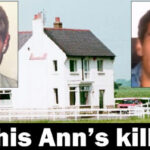

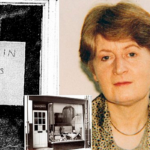
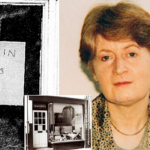
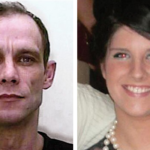



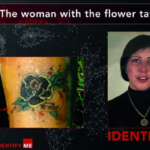















Comments are closed.